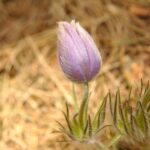Hosta gardens ideas are a beautiful and versatile option for any garden, providing a wide range of possibilities for design and creativity. With their lush foliage and easy maintenance, hostas have become a popular choice among gardeners looking to add visual interest and texture to their outdoor spaces.
In this article, we will explore the world of hosta gardens, offering valuable insights into selecting the perfect varieties, planning and designing your garden layout, creating ideal growing conditions, maintaining and caring for hostas, and showcasing them in creative ways.
Firstly, we will delve into the history of hosta plants, their benefits as garden additions, and the importance of choosing the right location to ensure their optimal growth and beauty. Understanding these fundamental aspects will serve as the foundation for creating a successful hosta garden that thrives in its environment.
Next, we will discuss how to select the best hosta varieties for your specific garden needs, touching on important factors to consider when choosing these plants. We will also highlight some popular and unique hosta varieties that may pique your interest.
Additionally, tips for planning the layout of a hosta garden and incorporating them into various garden styles such as formal, cottage or modern gardens will be provided. This section will also explore how to use a combination of hostas with other plants for a balanced garden design that showcases their beauty effectively.
Selecting the Perfect Hosta Varieties
When it comes to selecting the perfect hosta varieties for your garden, there are several factors to consider in order to make the best choices. One of the most important aspects to keep in mind is the specific growing conditions of your garden, such as sunlight exposure and soil type. Different hosta varieties have different requirements, so it’s crucial to select plants that will thrive in your garden environment.
Choosing the Best Hosta Varieties
When choosing hosta varieties for your garden, it’s essential to consider factors such as size, leaf color, texture, and growing habits. Some hostas are known for their large leaves, while others are prized for their variegated or uniquely shaped foliage.
Additionally, some hostas are more compact and better suited for smaller gardens or container planting. By evaluating these characteristics and matching them to your specific preferences and gardening needs, you can select the best hosta varieties for your outdoor space.
Factors to Consider
In addition to aesthetic qualities, other important factors to consider when selecting hosta plants include resistance to pests and diseases, as well as overall hardiness. Some hosta varieties are more susceptible to slug damage or certain fungal diseases than others. By choosing resistant varieties and paying attention to their care requirements, you can minimize potential problems in your garden.
Popular and Unique Hosta Varieties
There is a wide range of popular hosta varieties available on the market, each with its own unique characteristics and appeal. From classic green-leaved hostas like ‘Sum and Substance’ to variegated favorites such as ‘Patriot’ or ‘June’, there is a vast selection of options to choose from.
Additionally, there are many unique hybrid varieties that offer distinctive features such as ruffled edges or fragrant blooms. Exploring these different options can provide endless inspiration for creating diverse and captivating hosta gardens.
Planning and Designing Your Hosta Garden
When planning and designing a hosta garden, there are several important factors to consider in order to create a visually appealing and thriving landscape. Whether you have a formal, cottage, or modern garden style, incorporating hostas can add lushness and texture to your outdoor space. Here are some tips and ideas for planning and designing your hosta garden.
Tips for Planning the Layout
When planning the layout of your hosta garden, consider the size and shape of the area where you will be planting. Hostas come in a variety of sizes, so it’s important to select varieties that will fit well within the designated space. Additionally, take into account the natural contours of the land and any existing features such as trees or paths that can be integrated into the design.
Design Ideas for Different Garden Styles
For a formal garden style, creating symmetrical patterns with rows of hostas can add an elegant touch. In a cottage garden, mixing different varieties and colors of hostas with other perennials can create a charming and whimsical feel. In a modern garden, using large singular plantings of hostas against a backdrop of clean lines and minimalist features can make for a striking design.
Using Hostas in Combination With Other Plants
To achieve balance in your garden design, consider incorporating other plants that complement hostas. Pairing them with ferns or heucheras can add interest to the garden while providing different textures and colors. When combined with flowering shrubs or ornamental grasses, hostas can create dynamic focal points within the landscape.
By carefully planning and designing your hosta garden with these ideas in mind, you can create an enchanting outdoor space that is both visually appealing and sustainable. Experimenting with different layouts, styles, and plant combinations will not only enhance the beauty of your garden but also provide an enjoyable environment for relaxation and leisure.<
Ideal Growing Conditions for Hosta Plants
When it comes to creating the perfect hosta garden, understanding the ideal growing conditions for hosta plants is crucial. From sunlight and shade requirements to soil and watering needs, providing the right environment for your hostas will ensure healthy and vibrant growth. Here are some key factors to consider when it comes to the ideal growing conditions for hosta plants:
- Sunlight and Shade Requirements: Hostas thrive in shady or partially shaded areas, making them excellent choices for areas of the garden that receive minimal direct sunlight. However, some varieties can tolerate more sunlight than others, so it’s important to consider the specific needs of the hosta varieties you choose for your garden.
- Soil and Watering Needs: Hostas prefer well-draining soil that is rich in organic matter. Amending the soil with compost can help improve its texture and fertility. When it comes to watering, hostas generally require consistent moisture, especially during dry periods. Mulching around the base of hosta plants can help retain soil moisture and regulate temperature.
- Climate Considerations: While hostas are known for their ability to thrive in cooler climates, there are also heat-tolerant varieties available for gardeners in warmer regions. It’s important to choose hosta varieties that are well-suited to your specific climate and environmental conditions.
By ensuring that your hosta garden provides the right growing conditions, you can expect lush foliage and beautiful blooms from your plants. Understanding these essential elements will set the stage for a thriving hosta garden that will be a joy to behold.
Maintaining and Caring for Hosta Gardens
Hosta gardens are a beautiful addition to any outdoor space, but they do require proper maintenance and care to thrive. When it comes to watering hostas, it’s important to keep the soil consistently moist, especially during hot summer months. Using a soaker hose or drip irrigation system can help ensure that the plants receive enough water without becoming waterlogged. Additionally, applying a layer of mulch around the base of the hostas can help retain moisture and suppress weed growth.
Fertilizing hostas is another essential aspect of their care. A balanced, slow-release fertilizer can be applied in the spring as the plants begin to emerge from dormancy. It’s important not to over-fertilize hostas, as excessive nitrogen can lead to lush foliage but fewer blooms. As for pest control, keeping the garden free of debris and weeds can help deter pests like slugs and snails from taking up residence among your hostas.
Seasonal care for hosta plants involves cutting back the foliage in the fall once it has turned yellow or brown. This helps prevent diseases from overwintering and makes for a tidier garden appearance during the dormant season. In very cold climates, it may also be necessary to protect hostas from winter damage by covering them with a layer of mulch after the ground freezes.
| Maintenance Practices | Benefits |
|---|---|
| Consistent watering | Prevents dehydration and wilting |
| Fertilizing in spring | Promotes healthy growth and blooming |
| Pruning in fall | Aids in disease prevention and prepares for winter dormancy |
Creative Ways to Showcase Hostas in the Garden
When it comes to showcasing hostas in the garden, there are numerous creative ways to enhance the beauty of these versatile plants. One of the most popular hosta gardens ideas is to explore innovative container gardening options.
Hostas can thrive in containers, and this provides an opportunity to easily move them around the garden to create focal points or add visual interest to different areas. Consider mixing different hosta varieties in a single container or pairing them with complementary plants for a stunning display.
In addition to container gardening, there are various other ways to use hostas as part of different garden features. For example, hostas can be used as borders or edging along pathways, creating a soft and lush appearance.
Their large and eye-catching leaves also make them great for adding texture and depth when used as focal points in the garden. Whether it’s a formal, cottage, or modern garden style, hostas can be incorporated in different design elements to suit any aesthetic preference.
Furthermore, unique ways to display hostas can also include using them as groundcover under trees or mixed with other shade-loving plants for a balanced garden design. The varying leaf shapes, sizes, and colors of different hosta varieties provide endless opportunities for creativity when it comes to designing and showcasing these plants in the garden.
By experimenting with different arrangements and combinations, gardeners can create one-of-a-kind displays that highlight the natural beauty of hostas while elevating the overall appeal of their outdoor space.
Enhancing Hosta Gardens With Complementary Plants
Complementary plants can add depth and visual interest to hosta gardens, creating a lush and harmonious landscape. When selecting companion plants for hostas, it is essential to consider their sunlight, soil, and water requirements to ensure they thrive together. Here are some tips and ideas for enhancing hosta gardens with complementary plants:
- Consider the height and texture of companion plants to create a balanced look in the garden
- Choose shade-loving perennials such as ferns, astilbes, and heucheras that complement the foliage of hostas
- Incorporate spring-blooming bulbs like daffodils and tulips for pops of color before the hostas fully emerge
- Create contrast with bold foliage plants like coral bells (Heuchera) or Japanese painted ferns (Athyrium niponicum)
By carefully selecting complementary plants, you can elevate the beauty of your hosta garden while providing a welcoming environment for beneficial insects and wildlife.
To create visually striking plant combinations with hostas, consider incorporating different leaf shapes, sizes, and colors. For example, pairing large-leafed varieties with delicate ferns can create an eye-catching display. Additionally, mixing variegated hostas with solid-colored foliage plants can add an element of intrigue to the garden.
When planting companions alongside hostas, aim for a cohesive landscape by repeating similar colors or themes throughout the garden. This can be achieved by using a consistent color palette or by incorporating repeating patterns in plant arrangements. The goal is to create a unified design that enhances the natural beauty of the hosta garden.
Ultimately, enhancing hosta gardens with complementary plants offers endless opportunities for creativity and personal expression. With careful planning and consideration of plant pairings, you can create a stunning outdoor space that showcases the unique charm of hostas while adding diversity and interest to your garden landscape.
Hosta Garden Inspiration and Ideas
When it comes to creating a stunning and unique garden, hostas offer endless possibilities. From their lush and vibrant foliage to their versatility in different garden styles, hosta gardens can truly elevate any outdoor space. With the right selection of hosta varieties, careful planning and design, as well as proper maintenance and care, you can create a captivating hosta garden that will be the envy of all your visitors.
Whether you have a formal, cottage, or modern garden style, there are countless ways to incorporate hostas into your landscape. These shade-loving plants can serve as striking focal points or provide a beautiful backdrop for other plants. By carefully selecting companion plants that pair well with hostas and planning your layout thoughtfully, you can create a cohesive and harmonious garden landscape that will leave a lasting impression.
Looking for some inspiration? Take a look at stunning hosta garden examples or get creative with unique ways to showcase hostas in your outdoor spaces. Consider innovative container gardening ideas for displaying hostas or explore DIY projects and crafts using hosta leaves and blooms. The possibilities are endless when it comes to bringing your hosta garden ideas to life, so let your imagination run wild and create a beautiful outdoor oasis with these gorgeous foliage plants.
Frequently Asked Questions
How Do You Arrange a Hosta Garden?
To arrange a hosta garden, start by selecting a suitable location with well-drained soil and partial shade. Then, plan the layout and spacing of the hosta plants, considering their mature size and colors to create an aesthetically pleasing design.
What Looks Good With Hosta Plants?
Hosta plants look good when paired with various companion plants such as ferns, astilbes, heucheras, tiarellas, and other shade-loving perennials. These combinations can add texture, color contrast, and visual interest to the garden.
How Many Hostas Should You Plant Together?
When planting hostas together, it’s important to consider their mature size and give them enough space to grow without getting overcrowded. Generally, it’s recommended to plant hostas about 18 to 24 inches apart to allow for proper airflow and prevent the garden from looking too dense or congested.

Welcome to my gardening blog! I am passionate about plants and enjoy sharing my knowledge and experiences with others. In this blog, I will write about everything related to gardening, from tips on how to get started to updates on my own garden projects.





